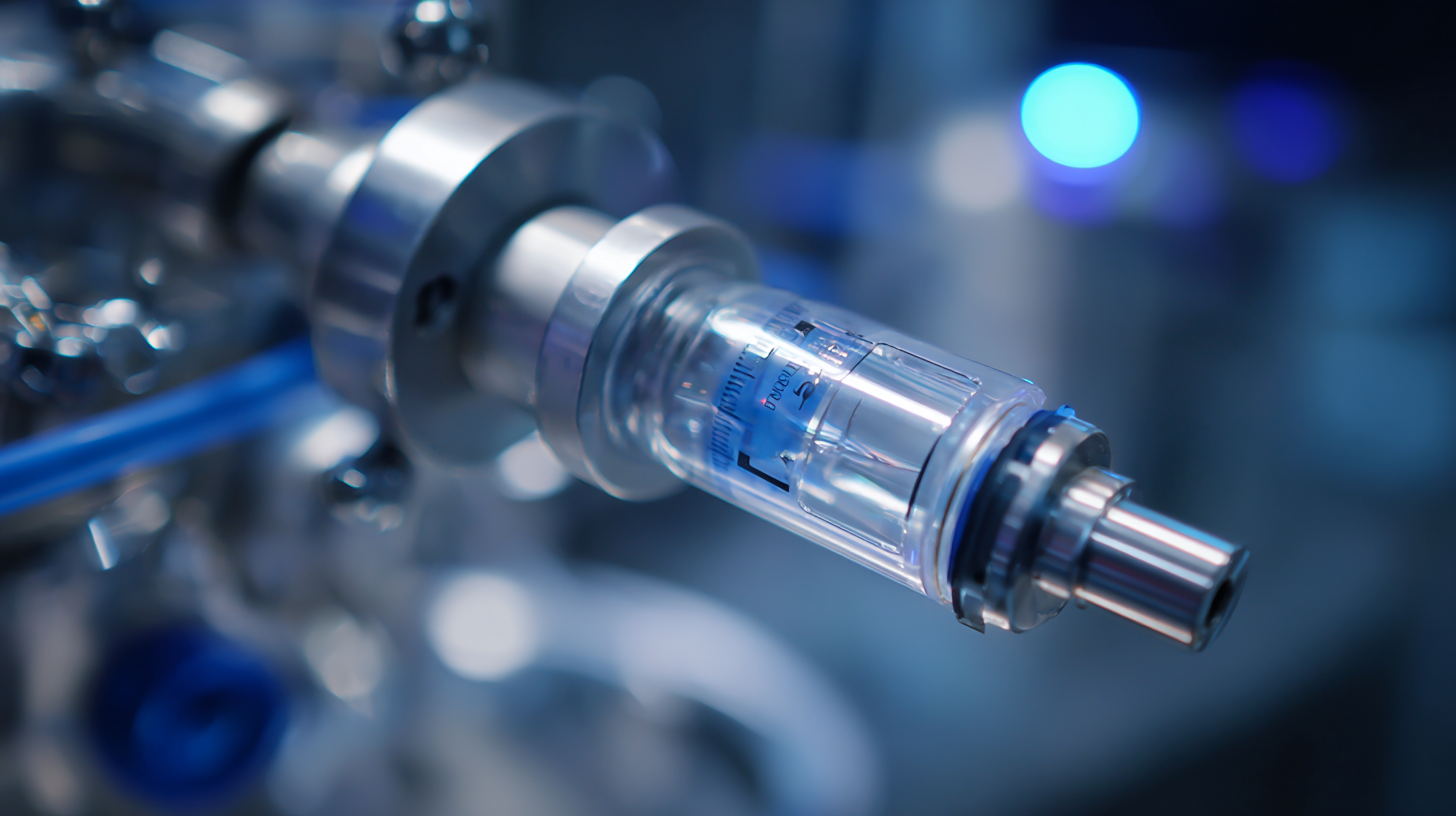Understanding the Importance of Luer Stopcocks in Fluid Management Systems for Healthcare Efficiency
 In the realm of healthcare, efficient fluid management systems are critical to patient safety and operational effectiveness.
Luer stopcocks play a pivotal role in these systems, allowing for precise control over the flow of intravenous fluids and medications.
According to a report by the Institute for Safe Medication Practices, a staggering 86% of medication errors occur during the administration process, underscoring the need for reliable devices like luer stopcocks that minimize risks and enhance safety.
Additionally, a study published in the Journal of Parenteral and Enteral Nutrition revealed that the implementation of standardized luer stopcock protocols reduced the incidence of complications by over 30% in hospital settings.
As healthcare providers strive for improved efficiency and patient outcomes, understanding the importance of luer stopcocks is essential for advancing fluid management practices in today’s fast-paced medical environment.
In the realm of healthcare, efficient fluid management systems are critical to patient safety and operational effectiveness.
Luer stopcocks play a pivotal role in these systems, allowing for precise control over the flow of intravenous fluids and medications.
According to a report by the Institute for Safe Medication Practices, a staggering 86% of medication errors occur during the administration process, underscoring the need for reliable devices like luer stopcocks that minimize risks and enhance safety.
Additionally, a study published in the Journal of Parenteral and Enteral Nutrition revealed that the implementation of standardized luer stopcock protocols reduced the incidence of complications by over 30% in hospital settings.
As healthcare providers strive for improved efficiency and patient outcomes, understanding the importance of luer stopcocks is essential for advancing fluid management practices in today’s fast-paced medical environment.
Significance of Luer Stopcocks in Modern Fluid Management Practices
 Luer stopcocks play a crucial role in modern fluid management practices within healthcare settings. These devices are designed to control the flow of liquids and gases in various medical applications, ensuring precise delivery and safe handling of fluids. By enabling seamless connections among different components, Luer stopcocks contribute to the efficiency and safety of patient care. Their adaptability makes them essential in environments ranging from hospitals to outpatient clinics, allowing for quick adjustments and reliable performance during critical procedures.
Luer stopcocks play a crucial role in modern fluid management practices within healthcare settings. These devices are designed to control the flow of liquids and gases in various medical applications, ensuring precise delivery and safe handling of fluids. By enabling seamless connections among different components, Luer stopcocks contribute to the efficiency and safety of patient care. Their adaptability makes them essential in environments ranging from hospitals to outpatient clinics, allowing for quick adjustments and reliable performance during critical procedures.
Moreover, the significance of Luer stopcocks extends beyond just fluid delivery; they are integral to reducing the risk of contamination. The design of these stopcocks minimizes the chances of air bubbles and allows clinicians to maintain a sterile connection. In today’s healthcare landscape, where patient safety is paramount, the reliability of Luer stopcocks in preventing complications is invaluable. As fluid management systems continue to evolve, the importance of these simple yet effective devices will only grow, solidifying their position as a standard in modern medical practice.
Key Features of Luer Stopcocks That Enhance Healthcare Efficiency
Luer stopcocks play a crucial role in enhancing healthcare efficiency, primarily due to their design and functionality. One of the key features of these devices is their ability to facilitate multidirectional fluid flow control. This is essential in medical settings where accurate delivery and management of intravenous fluids, medications, and blood products are vital. The ergonomically designed handles allow healthcare professionals to operate them smoothly, ensuring swift adjustments without compromising patient safety.
Another significant feature is the compatibility of Luer stopcocks with various medical devices, such as syringes and catheters. This universality reduces the risk of cross-contamination and simplifies the process of connecting different components of fluid management systems. Furthermore, many modern Luer stopcocks come equipped with color-coded ports, enhancing the ease of use during critical situations and improving the speed of response in emergencies. These innovations contribute to streamlined workflows in healthcare settings, ultimately supporting better patient outcomes and operational efficiency.
| Feature | Description | Impact on Efficiency |
|---|---|---|
| Easy Grip Design | Ergonomically designed for reliability and ease of use. | Reduces the risk of hand fatigue and enhances control during fluid management. |
| Color-Coded Ports | Distinct colors for different functions, facilitating quick identification. | Decreases the chances of errors and speeds up the workflow in critical situations. |
| Aseptic Connectors | Designed to maintain sterile fluid pathways and prevent contamination. | Enhances patient safety and reduces the risk of hospital-acquired infections. |
| Multiple Connection Options | Compatible with various tubing sizes and configurations. | Increases versatility and adaptability in different clinical settings. |
| Reduced Backflow Risk | Innovative design to minimize backflow during procedures. | Improves fluid management accuracy and patient outcomes. |
Best Practices for Integrating Luer Stopcocks into Clinical Settings
Incorporating luer stopcocks into clinical settings is vital for enhancing healthcare efficiency, particularly in fluid management systems. According to recent market forecasts, the advanced medical stopcock market is projected to continue its growth trajectory through 2028, driven by the increasing need for precise fluid control in healthcare environments. A study highlights the importance of minimal residual volume in luer activated stopcocks, which ensure effective flushing of any remaining fluids. This not only reduces the risk of contamination but also plays a crucial role in maintaining patient safety.
Best practices for integrating luer stopcocks into clinical settings involve training staff to not only utilize these devices efficiently but also to understand their maintenance and implementation in emergency protocols. The alarming number of homeowners unaware of how to turn off vital systems points to a broader trend in emergency preparedness that also applies in healthcare. Hospitals must ensure that their medical staff is well-versed in the operation and handling of luer stopcocks to mitigate risks associated with fluid mismanagement during critical scenarios. Enhanced training and adherence to protocols can greatly impact outcomes and streamline healthcare operations.
Understanding the Role of Luer Stopcocks in Fluid Management Systems
This chart illustrates the daily usage of Luer stopcocks across various clinical settings. It highlights their critical role in fluid management, ensuring efficient healthcare delivery and optimal patient care.
Common Challenges with Luer Stopcocks and Solutions for Improvement
Luer stopcocks play a crucial role in fluid management systems, but they are not without challenges. One common issue is the risk of leaks during fluid transfer. This can lead to contamination and ineffective fluid delivery, jeopardizing patient safety. To address this, manufacturers can focus on improving the design of the stopcock seals to ensure a tighter fit and better material compatibility that withstands various medications and fluids.

Another significant challenge is the potential for improper handling or operation by healthcare staff, which can result in air embolisms or unintended fluid flow. Ongoing training and education for medical personnel on the correct usage of luer stopcocks are essential. Additionally, employing intuitive designs and color-coding mechanisms can help mitigate errors and enhance user experience, thereby improving overall healthcare efficiency. By considering these challenges and implementing targeted solutions, institutions can significantly improve the reliability and effectiveness of fluid management systems.
Future Trends in Fluid Management Systems Incorporating Luer Stopcocks
The integration of Luer stopcocks into fluid management systems is poised to transform healthcare efficiency in the coming years. As demand for precision and safety in medical procedures increases, future fluid management systems will likely emphasize the design and functionality of Luer stopcocks. These components are already recognized for their role in ensuring controlled fluid flow, reducing the risk of contamination, and improving patient outcomes. Innovative designs are expected to emerge, incorporating materials that resist microbial growth and ergonomic features that facilitate easy operation for healthcare providers.
Furthermore, advancements in technology will enhance the interoperability of Luer stopcocks with automated fluid management systems. The use of smart technology will allow for real-time monitoring and adjustment of fluid delivery, ensuring that the correct dosage is administered at the right time. Data analytics could be employed to track usage patterns, thereby optimizing workflows in clinical environments. As healthcare systems increasingly prioritize efficiency and safety, the evolution of Luer stopcocks within these fluid management systems will serve as a critical component in meeting future challenges in patient care.
